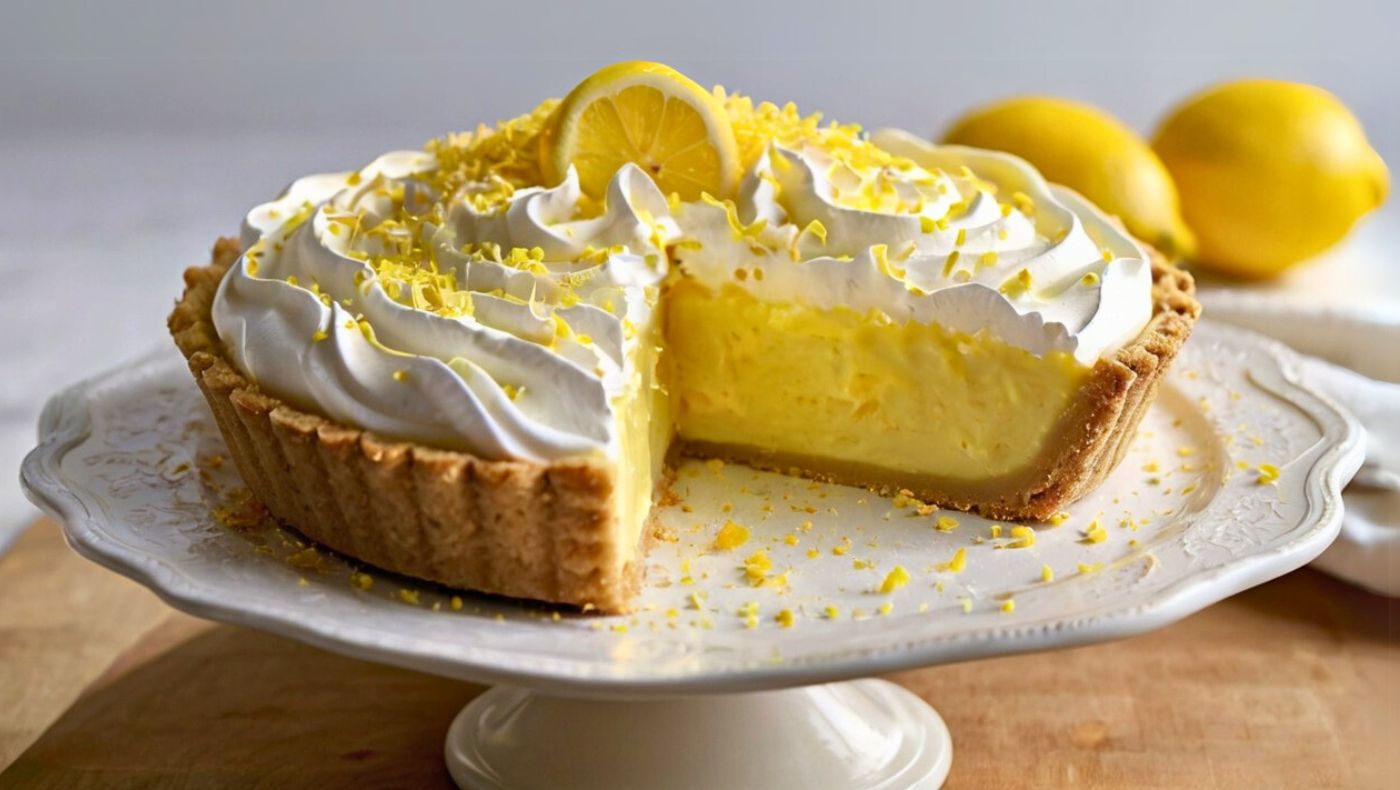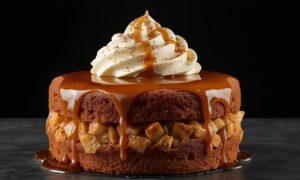Ever tasted sunshine on a fork? That’s exactly how Lemon Chiffon Pie feels, light, tangy, and refreshing. It’s not just a pie. It’s a slice of summer.
I still remember my first bite. My grandmother’s recipe, cool, fluffy, bursting with lemon flavor. That moment stuck with me. Today, I’m sharing how you can recreate that same magic in your kitchen.
Lemon Chiffon Pie is soft yet bold. Smooth, never heavy. With a crisp crust, airy lemon filling, and creamy top layer, this pie stops shows.
Craving something sweet but not heavy? Lemon Chiffon Pie is your answer. It melts in your mouth. Wakes up your taste buds with every bite. Perfect for spring brunches, family dinners, or solo treats, it’s dessert that disappears fast. One slice of Lemon Chiffon Pie, and you’ll crave more.
In this post, you’ll learn to whip up perfect Lemon Chiffon Pie step by step. No baking stress. Just simple tools, clear tips, and bold flavor. By the end, you’ll have a go to dessert that’s bright, airy, and unforgettable.
Let’s dive into the zesty world of Lemon Chiffon Pie. Time to bring that bakery fresh flavor home.
What Makes Lemon Chiffon Pie Special
The magic lies in layered textures and temperatures. Hot lemon curd meets cold whipped cream. Gelatin stabilizes it. Egg whites lighten it. Each component reaches its peak before combining.
Professional kitchens love chiffon pies. They hold beautifully for service. They deliver consistent results. The filling won’t weep like meringue. It won’t separate like unstabilized custards. Yet the technique intimidates many cooks who haven’t mastered the fundamentals.
Understanding emulsification and protein coagulation makes the difference. When you know why each step matters, troubleshooting becomes intuitive. No more guesswork.
Ingredients & Substitutions
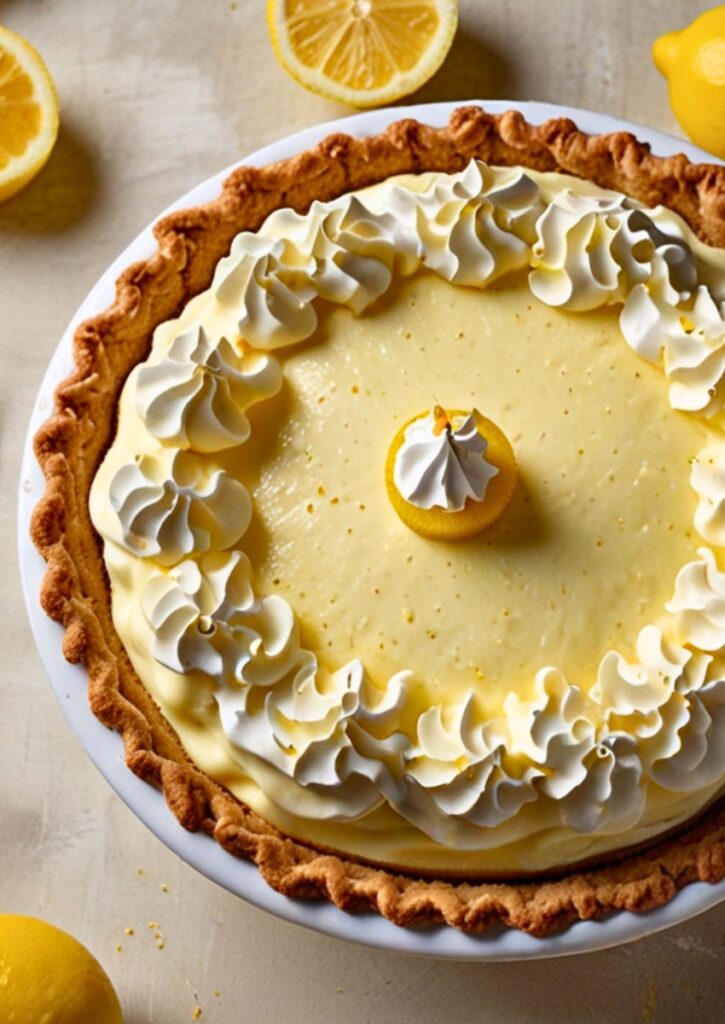
For the Graham Cracker Crust:
- 1½ cups graham cracker crumbs (about 12 crackers)
- ⅓ cup granulated sugar
- 6 tablespoons unsalted butter, melted
- Pinch of kosher salt
For the Lemon Chiffon Filling:
- 1 packet (2¼ teaspoons) unflavored gelatin
- ¼ cup cold water
- 4 large egg yolks
- ½ cup fresh lemon juice (about 3-4 lemons)
- ¾ cup granulated sugar, divided
- 2 tablespoons lemon zest
- 3 large egg whites, room temperature
- 1 cup heavy cream, cold
- ¼ teaspoon vanilla extract
- Pinch of cream of tartar
Smart Substitution Notes:
Swap graham crackers for digestive biscuits or gingersnaps. Each brings different flavor profiles. Gingersnaps add warmth that complements citrus beautifully. Digestives provide neutral sweetness.
For gelatin, use agar powder as a vegetarian alternative. Use only ¾ the amount since it sets firmer. Leaf gelatin offers superior clarity and smoother texture. Soak 3 sheets in cold water instead of powder.
Fresh lemon juice makes enormous difference over bottled. Volatile oils in fresh citrus create complexity that processors destroy. Meyer lemons bring floral notes. Eureka lemons provide classic tartness.
Heavy cream needs 36-40% fat content. It whips to the most stable peaks. Lower fat versions won’t hold structure long enough for proper folding technique.
Room temperature egg whites whip faster. They achieve greater volume than cold ones. Separate eggs while cold. Let whites come to temperature naturally.
Step by Step Instructions
Preparing the Crust
Preheat your oven to 350°F. Pulse graham crackers in a food processor until fine crumbs form. Don’t over process into powder.
Combine crumbs, sugar, and salt in a bowl. Pour melted butter over mixture. Toss with a fork until evenly moistened. The texture should hold together when squeezed but not feel greasy.
Press mixture firmly into a 9-inch pie pan. Work up the sides about 1 inch. Use the bottom of a measuring cup to create even thickness. Bake for 10-12 minutes until golden and fragrant.
Cool completely before filling. This step can’t be rushed. Warm crust will melt your chiffon filling.
Creating the Lemon Base
Sprinkle gelatin over cold water in a small bowl. Let bloom for 5 minutes until spongy and translucent.
Whisk egg yolks in a heavy bottomed saucepan until smooth. Add lemon juice, ½ cup sugar, and lemon zest. The mixture will look curdled initially. This is normal.
Cook over medium low heat. Whisk constantly until mixture thickens enough to coat the back of a spoon. This takes 6-8 minutes and requires patience. Too high heat scrambles the eggs.
Remove from heat. Whisk in bloomed gelatin until completely dissolved. Strain through fine-mesh sieve to remove any lumps or zest pieces. Cool to room temperature. Stir occasionally to prevent skin formation.
Mastering the Chiffon Technique
Beat egg whites with cream of tartar until soft peaks form. Gradually add remaining ¼ cup sugar. Beat to stiff, glossy peaks that hold their shape.
In separate bowl, whip cream with vanilla to soft peaks. Don’t over whip or you’ll make butter during the folding process.
When lemon mixture reaches room temperature, fold in one third of the egg whites. Use a rubber spatula. Cut down through center, across bottom, up side, and over top in smooth motions.
Fold in remaining whites in two additions. Then gently fold in whipped cream. The mixture should be uniform pale yellow with no white streaks visible.
Assembly and Chilling
Pour filling into prepared crust. Smooth top gently with offset spatula. Don’t press or compact the mixture.
Refrigerate for at least 4 hours, preferably overnight. The gelatin needs time to set completely while maintaining that light texture.
For professional service, chill individual slices on plates 30 minutes before serving. This prevents the filling from sliding when cut.
Cooking Techniques & Science
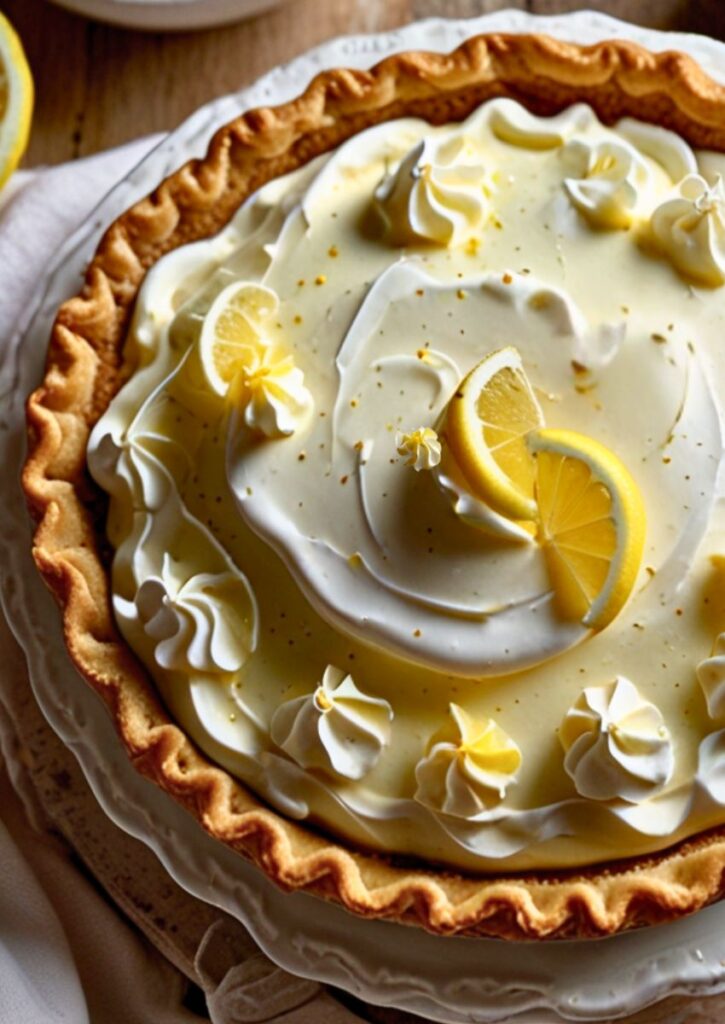
Perfect chiffon requires understanding protein behavior at different temperatures. Egg yolks create richness and help emulsify the base. Whites provide lift through trapped air bubbles.
Gelatin acts as a stabilizer rather than a setting agent. Too much creates rubbery texture. Too little won’t support the airy structure. The blooming process hydrates gelatin molecules. This allows them to dissolve smoothly into warm mixtures.
Temperature control during cooking prevents curdling. Constant whisking distributes heat evenly. The proteins gradually coagulate into a smooth custard base. Straining removes any bits that might have overcooked despite your best efforts.
The folding technique preserves maximum air volume. Aggressive mixing deflates proteins. This creates dense, heavy results. Each fold should incorporate ingredients while maintaining lightness.
Professional kitchens often make chiffon bases a day ahead. They hold them refrigerated before assembly. This approach allows better scheduling while ensuring proper set.
Serving & Pairing Suggestions
Slice chiffon pie with a sharp knife dipped in warm water between cuts. Clean blade prevents dragging and maintains clean edges.
Garnish simply to let the texture shine. A dollop of lightly sweetened whipped cream works well. Candied lemon zest or fresh berries complement without overwhelming.
For elegant plating, dust plates with powdered sugar. Drizzle with berry coulis. The pale yellow filling photographs beautifully against darker backgrounds.
Wine pairings should balance the citrus acidity. Late harvest Riesling or Moscato d’Asti provide sweetness without competing flavors. Champagne’s effervescence cleanses the palate between rich bites.
Consider temperature when serving. Chiffon tastes best slightly chilled but not ice cold. Ice cold temperatures mute the lemon flavor. Remove from refrigerator 15 minutes before serving for optimal taste.
The pie holds well for 2-3 days covered. This makes it ideal for advance preparation in professional settings.
Troubleshooting Common Issues
Weeping filling usually indicates insufficient gelatin or inadequate chilling time. The proteins need proper hydration and temperature stability to maintain structure.
Dense, heavy texture results from over mixed whites or cream. Once proteins start breaking down, there’s no recovery. Start fresh with new ingredients.
Grainy texture in the base suggests eggs cooked too quickly. It can also mean gelatin didn’t dissolve completely. Always strain the mixture. Ensure gelatin blooms properly before adding.
Cracks on the surface often occur from temperature shock. Gradual cooling prevents this issue. Cover the pie surface directly with plastic wrap.
If your crust becomes soggy, it wasn’t cooled completely before filling. The filling may have been too warm during assembly. Patience during cooling prevents most structural problems.
Creative Variations
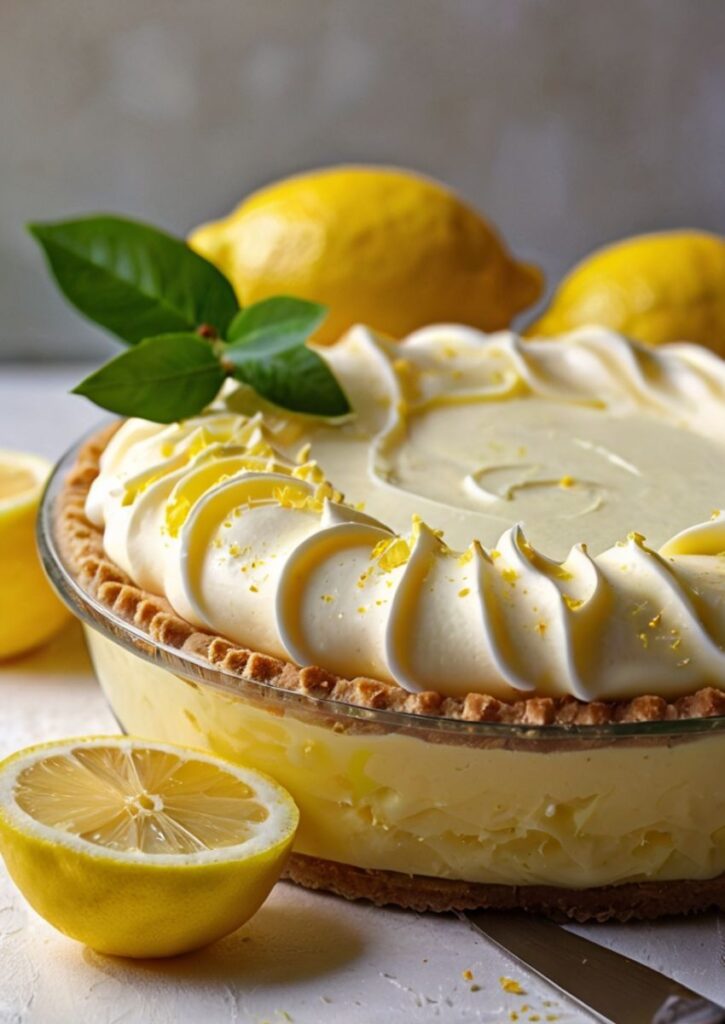
Lime chiffon substitutes lime juice and zest for lemon. This creates tropical appeal. Key limes provide more complex flavor than Persian varieties.
Orange chiffon works beautifully with Grand Marnier or Cointreau added to the base. The alcohol must be cooked briefly to evaporate harsh notes.
For chocolate lemon combination, fold melted dark chocolate into a portion of the base before combining with whites. Swirl for marbled effect.
Coconut crust made from toasted coconut flakes instead of graham crackers pairs wonderfully with citrus fillings. Toast coconut until golden for deeper flavor.
Professional kitchens often create individual portions in tart shells or glasses. This approach allows portion control while maintaining impressive presentation.
Final Thoughts on Lemon Chiffon Pie
Mastering Lemon Chiffon Pie elevates any pastry repertoire from competent to exceptional. The technique teaches fundamental skills. Protein manipulation, temperature control, and timing apply across countless other desserts.
This isn’t just another pie recipe. It’s a masterclass in texture. A study in precision. A testament to how simple ingredients become extraordinary through proper technique.
The ethereal lightness achieved through careful folding creates magic. The bright acidity balanced by gentle sweetness delivers perfection. Each spoonful dissolves on the tongue while delivering intense flavor. These elements make Lemon Chiffon Pie worthy of any professional kitchen.
Practice the individual components separately before combining them. Master your curd technique. Perfect your meringue skills. Understand how gelatin behaves. Each element must be flawless for the whole to succeed.
Remember that great Lemon Chiffon Pie isn’t just about following steps. It’s about understanding why each step matters. Learn how to adjust when things don’t go perfectly. Temperature, timing, and technique create magic from ordinary ingredients.
Frequently Asked Questions about Lemon Chiffon Pie
Q: Can I make lemon chiffon pie without gelatin?
A: Gelatin provides essential stability for the airy texture. Without it, the filling won’t hold its shape and will likely separate. Agar can substitute as a vegetarian alternative, but cornstarch won’t provide the same results.
Q: Why did my chiffon filling turn out dense and heavy?
A: Over mixing is the most common culprit. Once egg whites or cream are beaten past their peak, they lose their ability to maintain air bubbles. The folding technique must be gentle to preserve volume.
Q: How far in advance can I make chiffon pie?
A: The pie actually improves after overnight chilling, as flavors meld and the texture sets properly. It keeps well for 2-3 days covered in the refrigerator, making it excellent for advance preparation.
Q: What’s the difference between chiffon and mousse?
A: Chiffon uses gelatin for stability and is served in a crust, while mousse typically relies on whipped cream and eggs alone. Chiffon has a lighter, more stable texture that holds up better for slicing and serving.
Q: Can I freeze lemon chiffon pie?
A: Freezing isn’t recommended as it breaks down the delicate protein structure and creates a watery, separated texture upon thawing. The fresh, airy quality that makes chiffon special doesn’t survive freezing well.

Swiftly Captions by Tina Smith — Quick, flavorful food recipes made simple, bringing fresh inspiration to your kitchen every day
